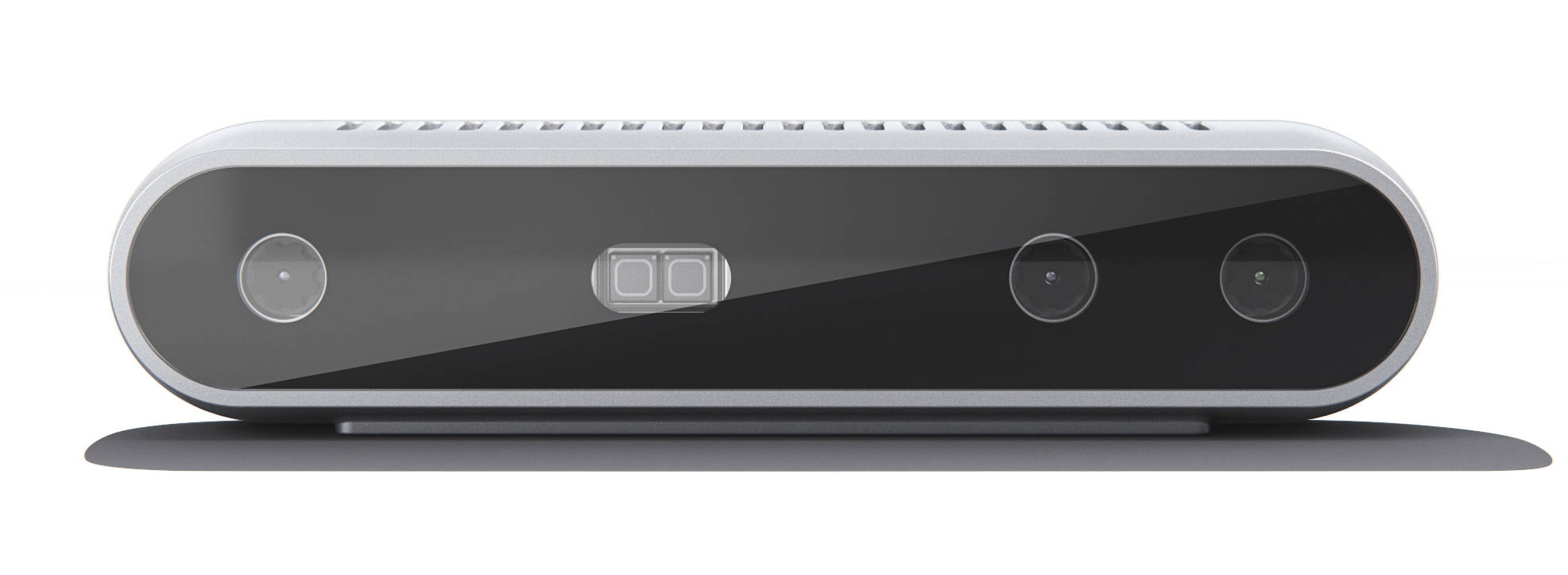| Intel Ships New RealSense Cameras Is This The Kinect Replacement We Have Been Looking For? |
| Written by Harry Fairhead | |||
| Friday, 26 January 2018 | |||
|
With Microsoft stopping the production of the Kinect, the Intel RealSense family of cameras seems like the obvious replacement. But there are problems - can we trust Intel to keep the hardware in production?
The Intel RealSense camera has been around in various guises for quite a while, but Intel is now shipping two new models in the range - the D415 and the D435. Both cameras feature:
The main differences between the two models is that that D415 works from 0.16 to 10m and has a field of view6 9.4° x 42.5° x 77° (+/- 3°) the more expensive D435 works from 0.11 to 10m and has a wider field of view 91.2 x 65.5 x 100.6 (+/- 3°). The D415 costs $149 and the D435 costs $179. The RealSense D400 module uses structured light rather than time of flight, which makes it more like the first Kinect model than the later one. You can see the new cameras in a fairly uniformative promo:
Both cameras work with the RealSense SDK 2.0 – which is now available as a cross-platform, open source SDK on GitHub. It works with:
So can you trust Intel and use the RealSense camera? The first problem is that this is being marketed as an OEM component. You can order it from Intel or a small number of component suppliers. The bad news is that, as with earlier models, Intel just doesn't seem to order enough and they are already out of stock. Perhaps this is the Kinect effect with everyone trying to upgrade but it is more likely just Intel not ordering very many. I'd have more confidence if the supply of cameras was less problematic and if they were available not just from component suppliers but at least some PC outlets. The problem is that Intel has never had to market anything in its existence - the world has always beaten a path to its door to buy whatever the next x86 chip is. This lack of marketing resulted in the dropping of the Edison, Joule and other IoT devices. Intel simply doesn't get the idea of the "maker" community and supplying the information and devices that are necessary to make something a sucess. To give you some idea of the situation, I started a book on the Kinect and dropped it after completing eight chapters because Microsoft was moving away from .NET and WPF. I only reached Chapter 2 of a similar book on the RealSense camera before losing faith in the future. Am I thinking of restarting the book? Unlikely at the moment...
More InformationRelated ArticlesGetting Started With RealSense In C# Intel Euclid - New Horizons For RealSense Intel RealSense - What Can YOU Do With It? To be informed about new articles on I Programmer, sign up for our weekly newsletter, subscribe to the RSS feed and follow us on Twitter, Facebook or Linkedin.
Comments
or email your comment to: comments@i-programmer.info
|
|||
| Last Updated ( Friday, 26 January 2018 ) |



